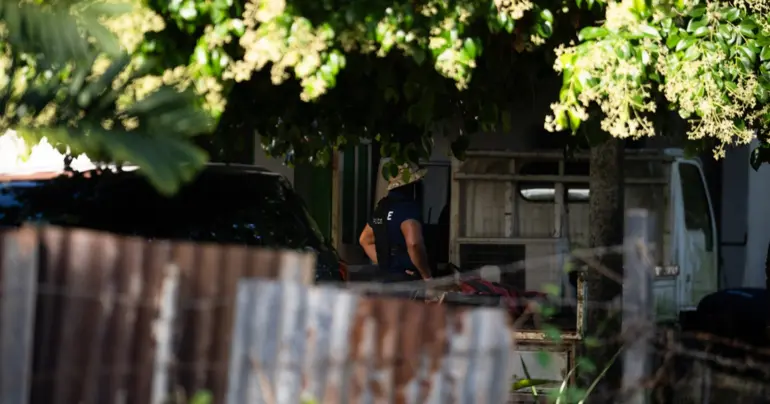Earth's core leaking iron, research finds
 By Sapeer Mayron
•
20 April 2020, 11:00PM
By Sapeer Mayron
•
20 April 2020, 11:00PM
American Samoa's volcanic plumes hold evidence that the earth's molten core has been leaking iron out into the rest of the planet of billions of years, new research from the Aarhus University in Denmark and the University of California has discovered.
In a paper published in Nature Geoscience researchers unpack how heavier iron isotopes (isotopes being the same element with different numbers of neutrons, resulting in slightly different masses) are drawn to cooler temperatures outside of the 6,000 degree core and out towards the Earth’s mantle.
Two volcanic hot spots in American Samoa, Ofu and Vaililulu’u are the most likely candidates for places on Earth where the core has leaked iron all the way up to the surface.
Geology Professor Emeritus Charles Lesher, is a Professor of earth system petrology at Aarhus University in Denmark. led the study. He told the Samoa Observer that their research was finally possibly thanks to advances in mass spectrometry (a scientific process used to measure the masses of molecules or groups of molecules) which uncovered previously invisible features in lava samples.

“In our high-temperature high-pressure experiments, we show that in response to a large temperature drop, heavy iron isotopes migrate towards low temperature and lighter isotopes to high temperature,” said Professor Lesher, who is also from the University of California Davis.
They found that lower temperatures draw the heavier iron isotopes away from the core, leaving behind the lighter ones, and with the hot spots in Samoa enriched in heavy iron isotopes, Professor Lesher suggests this is another way to prove the theory.
“A chief reason we are concerned about core mantle interaction is that much of the heat that keeps our planet running like plate tectonics resides in the core and is escaping across the core-mantle boundary,” Professor Lesher said.
“Since we can’t go down and measure the heat flow like we can do at the Earth’s surface we have to devise proxies to do the job.”
Those proxies are through computer simulations and experiments which look to match the scientist’s predictions about the geology with observations.
New developments in mass spectrometry mean these predictions can be tested far more rigorously than ever before.
The iron isotopes were chosen as a useful tool for detecting this leaking iron theory because it is a major component of the Earth’s core, so “a little bit goes a long way,” Professor Lesher said.
“Plumes originating from the core-mantle boundary could carry this fractionated material towards the Earth’s surface, where the plume begins to melt producing lava that can erupt to form ocean islands.”
Professor Lesher said despite the search for tiny variations in the isotope mass levels, the mass spectrometres make “easy work” of the research.
“We are measuring differences on the order of one part in 100,000 parts, which, for perspective, is like correctly counting 20 grains of sand in one cup holding two million grains of sand.”
Those tiny variations can tell researchers like Professor Lesher more about how the core and mantle of the Earth interact with each other.
“To quote Sherlock Holmes on solving the near perfect crime: ‘when you have eliminated all which is impossible, then whatever remains, however improbable, must be the truth,” he said on the research.
The Earth’s core is approximately 6,371 kilometres away from the surface, just 200 kilometres further than the distance between Samoa and West Papua.

Professor Lesher said unlike the rest of our universe, the Earth and its core remains somewhat elusive to researchers.
“I have to remind my students that we know more about the surface of the Sun, 150 million kilometres away, than we do about the deep interior of our own planet,” he said.
“Moreover, we have samples from the Moon, meteorites from Mars and information from rovers cruising around, but nothing we can hold in our hand from the deepest reaches of Earth’s own mantle or core. That is why places like Samoa are so special – if indeed we can decipher the geochemical code hidden in the lavas.”
Update: This story was amended to correct calculations used in the research.
 By Sapeer Mayron
•
20 April 2020, 11:00PM
By Sapeer Mayron
•
20 April 2020, 11:00PM











